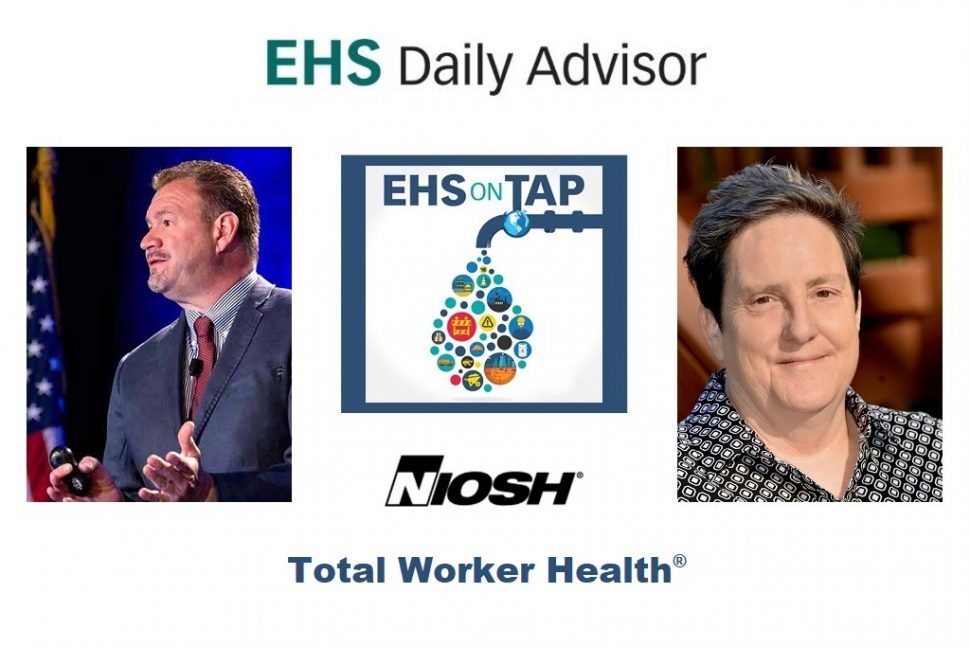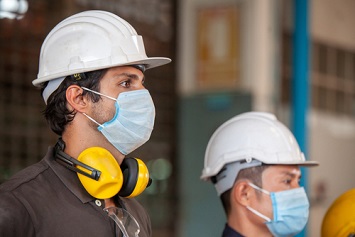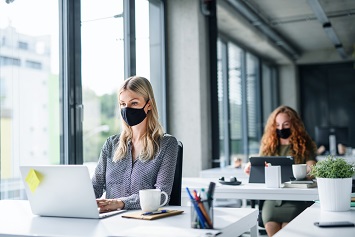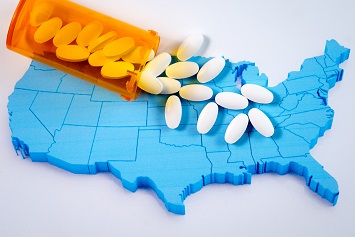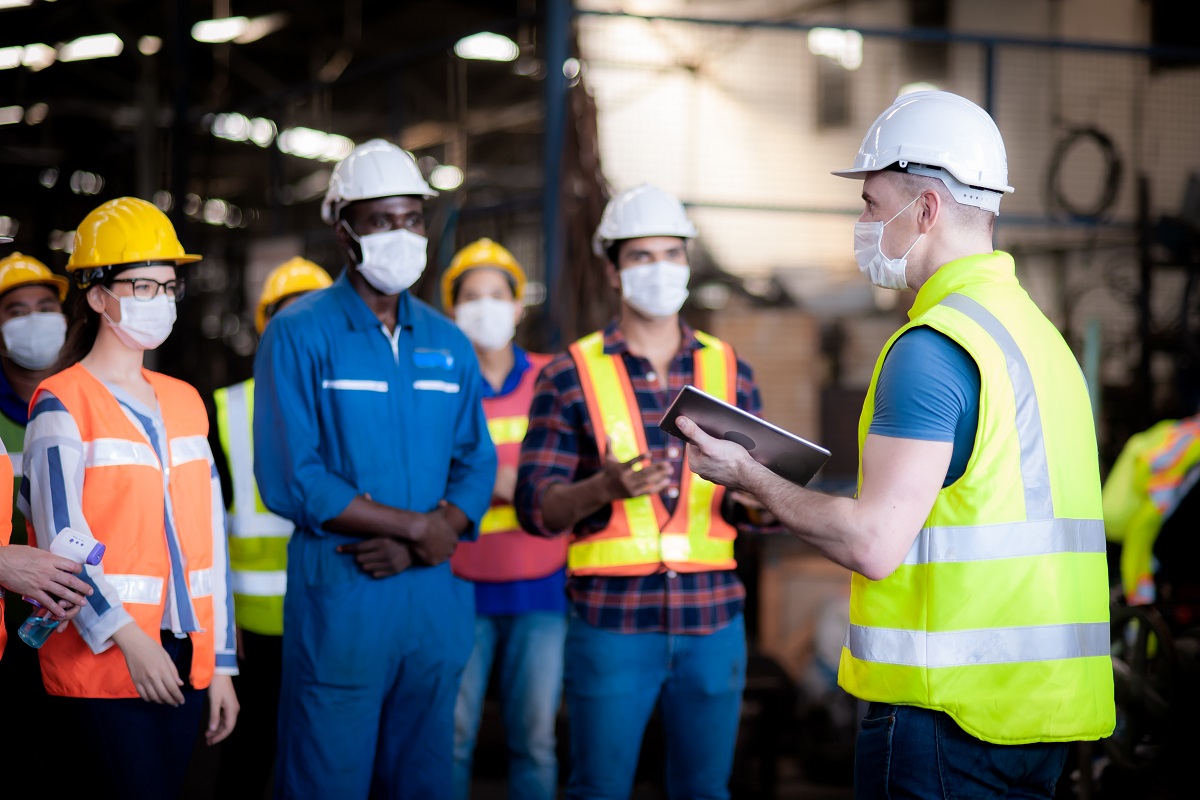There are many health threats facing the workforce today, such as stress, fatigue, obesity, mental health issues, and lung and heart disease, to name a few. These issues impact workers, as well as their organizations and the general public, and the entire working world can benefit from addressing the overall health of our populace, both nationwide and worldwide. World Health Day is tomorrow, April 7, and for this episode, we spoke with two members of the National Institute for Occupational Safety and Health’s (NIOSH) Total Worker Health® Program to help environment, health, and safety (EHS) professionals create a healthier workforce.
Justin Scace: Hello, everyone, and welcome to EHS On Tap. I’m your host, Justin Scace, senior editor of the EHS Daily Advisor. So, there are many health threats facing the workforce today, and we’re not just talking about COVID-19. Ailments like stress, fatigue, obesity, mental health issues, and lung and heart disease, just to name a few, continue to burden the public. These issues don’t just negatively affect workers but also negatively affect their organizations, as well. And the entire working world can benefit from addressing the overall health of our populace, both nationwide and worldwide.
So for World Health Day, coming up on April 7, we’re sitting down with two guests from the Total Worker Health program at the National Institute for Occupational Safety and Health (NIOSH), a part of the Centers for Disease Control and Prevention (CDC). And they have some great insight and tips for our audience of EHS professionals looking to help create a healthier workforce.
So we’re very excited to have on the show today Dr. L. Casey Chosewood and Dr. Paula Grubb. Casey is the director of the office for Total Worker Health at NIOSH. And Paula is a research psychologist at NIOSH in the division of science integration. So, Casey and Paula, welcome, and thank you so much for taking the time to join us today on EHS On Tap.
L. Casey Chosewood: Thanks, Justin. It’s really a pleasure to be here. We really appreciate your inviting us on today.
Paula Grubb: Thanks, Justin.
Justin Scace: Absolutely. To start things off, tell us a little bit about yourselves. What have your journeys in health and safety been like, and what are you working on now at NIOSH’s Total Worker Health program?
L. Casey Chosewood: Thanks so much for the opportunity, again, to be here. So I guess I should say upfront that really, my dream full-time job is just to be a grandfather, OK? I find myself spending more and more of my free time with my 8-year-old granddaughter and my 2-year-old granddaughters. Lily and Emory are the joy, the fun that I get to have every weekend or at soccer practice during the week. So if I could have full-time work that was satisfying on every level, it would be, OK, full-time grandfatherhood. And if anybody’s contemplating that out there, I say go for it. It’s like the perfect job, OK? But I do have other pursuits, as well, including Total Worker Health and our work here at NIOSH, which has been also very engaging and enjoyable.
So I got my start in medicine as primary care physician, so taking care of patients, seeing them in my office, and always doing work in the occupational field, as well, and seeing patients who clearly are not just homebodies but work bodies, as well, and knowing that the connection between what people do at work and what people do at home is extremely connected. You don’t leave all of your health issues and challenges in the parking lot when you walk into the workplace. And sort of on the other hand, when you have issues that come up at work, whether it’s an injury or challenges or stressors or a lot of workplace demands, you don’t leave those on your desk or on the factory floor when you go home. You bring those back to your home place, and it impacts your family and your kids and your partner and your friends.
So understanding this really strong connection between work and health is really where my research and my practice interests have become. In addition to private practice, I’ve also spent some time as the medical director of the large tech manufacturing company Lucent Technologies, and I’ve also been the medical director of the CDC’s clinics. So with that intro, I’ll pass it over to Paula to give you a little bit of her background. And then we’ll answer the second part of your question.
Paula Grubb: My background is nowhere near as stellar as Casey’s, but it’s an interesting path. I come from an experimental psychology background—experimental psychology and human factors. And I think I thought I was going to be doing some work with, you know, airplanes and helmet-mounted virtual displays, like in Top Gun, which was the movie that was out at the time. And then I ended up finding out about a job opportunity at NIOSH, which is a big employer in Cincinnati.
So I came on board doing work in neurobehavioral research, in which we looked at a lot of cognitive motor skills, postural sway, and other kinds of effects that chemicals in the workplace might have on the workers. So I went on field studies to lead smelting plants and an aluminum processing plant in the early days and then ended up transitioning into stress research and work organization. So I started doing a lot of work on job stress and workplace violence, which was a very big topic at the time, as well as bullying and management practices. And then I started working in the area of Total Worker Health because a lot of those things, such as fatigue and stress, come under that general umbrella. And currently, I’ve been working on the issue of the opioid crisis and first responders in the workplace.
L. Casey Chosewood: Great. Yeah. It’s really been great to work with Paula because so many of the challenges that we see in modern workplaces really revolve around this issue of high levels of demands that are oftentimes very difficult for workers to meet that bar. And when people can’t meet all of the demands of work, whether it’s new technology, long hours, or tough working conditions, the body’s reaction to that, the thing we feel, is this increased level of stress. And issues to both prevent and manage that stress are really taking a sort of front-and-center approach to the Total Worker Health portfolio. And we oftentimes see the distal, the downstream effects, of not managing stress well and not preventing stress well. And that shows up in challenges at work and increased conflict between workers and between supervisors and workers, and certainly, productivity suffers. Unfortunately, people carry that stress home.
It translates into increased risk for chronic disease or substance use issues. As Paula mentioned, we certainly see some workplaces really challenged with the opioid overdose crisis. We see suicide risks increasing in some of our workplaces and in certain sectors of the economy. So these are all real challenges that really closely look at that interface between our working lives and our personal lives—generally, areas that have not been in the domain of the traditional safety purview. So I think one of the important aspects of NIOSH is the research portfolio in this space that Total Worker Health specifically addresses. How can we use the workplace as a venue and use safety as the entry point to look more broadly at all of the challenges workers face on and off the job? And in a nutshell, that’s really what Total Worker Health is. It’s what kinds of programs, practices, and policies, those three P’s, are necessary to impact workers in the greatest way possible?
Keeping them safe, the bedrock of Total Worker Health, and certainly the expertise and the history of NIOSH are all about safety at work. We’re building on that to look beyond just people’s experiences at work and decide what additional programs and what additional interventions we can provide using the workplace as a venue and using employment as the vehicle to further increase the well-being of those workers. Now obviously, that’s good for the workers. It’s good for the family that they come home to every day. They’re safer. They’re less likely to get injured. They’re happier when they get home. They’re able to pursue life more vividly at home. But those people also wake up the next day and bring that higher level of health and well-being back to the workplace, and the employer benefits, as well. And that’s sort of the win-win cycle of really Total Worker Health improvement for organizations, individuals, and families and communities.
Justin Scace: Perfect. So as I mentioned, there are some upcoming health awareness events in April. I mentioned World Health Day is April 7. All this week, April 5 through the 11, is National Public Health week. And April is Stress Awareness month. So with all this health awareness going on right now in your work at NIOSH and Total Worker Health, we’ve talked a little bit about it, but if you could go into some more detail, what have you identified as some of the biggest health-related challenges that are facing the workforce today?
L. Casey Chosewood: Thanks. I’ll let Paula lead us off with her response to that, and then I’ll add in some things afterward.
Paula Grubb: Well, as you pointed out, you know, the stress awareness is very key. You know, when you tell people you work with job stress, they’re like, oh, you must have a really interesting job. I have a lot of job stress that I can tell you about. And I think safety professionals and HR professionals need to sort of increase their comfort around these issues to be of more help. They already have the skills to mitigate or address the challenges workers face, and stress is one of the things that shouldn’t be really any different. Casey, did you have anything to add?
L. Casey Chosewood: Yeah. Thanks, Paula. You know, I think these observances, these national observances and international observances, really give us an opportunity to think more broadly about some of the challenges that workers are facing. And Paula’s right. Stress is oftentimes like the common pathway that any kind of challenge that a worker has finds its way into an elevated level of stress. But some of the challenges that we’re seeing workers deal with, obviously, we can’t have a conversation about the challenges of work without addressing the major impact that the pandemic has had on workplaces and how it’s changed our relationship to work. Many of us now sort of work around the clock because our home is our workplace, right? Many of us, though, have also had to continue to physically report to work and face new stressors and new worries and new challenges. Many of us are more isolated than ever before.
Many of us unfortunately are; you know, alcohol sales, for instance, have gone way, way up during the pandemic. People talk about weight gain. The COVID-19-pound weight gain is one of the challenges that people are facing. It’s altered our ability to find recreation, to socialize, to do those things that we might do to lower our stress levels. Those are all issues that workers and employers are having to deal with.
The other real change that was happening before COVID that sped up a lot with COVID and is likely to remain with us for a long time to come is this constant love/hate battle we have with technology, right? There are parts of technology that have really been great. They have revolutionized how we work and how efficient we can become, but oftentimes, technology becomes our master, and we become subservient, if you will, to the forces of the constantly changing new learning curve and all of the new demands that new technologies places on this. There’s also a time urgency or a sort of a ticking clock, if you will, where we’re expected to utilize technology to respond more rapidly, to be always available, always on, a 24/7 kind of accessibility, that was never even an option before.
But now, because it is, people feel this underlying pressure to have a sense of more urgency to respond and to always be on and to be, you know, I think more perhaps engaged with their work 24/7. Some people benefit from that. Some people love that. Others really suffer in that environment. And the ability to find how your workers thrive or how they really are stressed with these new technologies is an important area for us to intervene in, as well. The other, I think, critical area where we should draw more attention with some of these national observances is really to talk about some of the challenges with substance use disorders and work because, as you know, that’s an increasingly challenging issue. Overdoses from some of the very powerful drugs, and illicit drugs especially, that are on the street today are unfortunately rising. More than 40 states around the country have reported increases in overdoses during the pandemic. And luckily, Paula is quite an expert in some of these issues. So I’ll ask her if she wants to share anything with us about the current opioid overdose crisis and in the context of work.
Paula Grubb: Well, I think, you know, there are workplace conditions that can lead to prescription opioid and illicit use that can lead to unsafe working conditions. And you can get injuries like slips, trips, and falls. Also, a heavy workload, job insecurity, and job loss are things that people are experiencing right now. And so, you know, they also have little control over their jobs, and a lack of paid leave and other benefits all have a lot to do with the opioid crisis. And now with the pandemic on top of that, when people are isolated, they’re not able to seek some treatments that they would. That kind of creates a little bit of a perfect storm for this problem to keep going. Is there anything else you want me to add, Casey, right now?
L. Casey Chosewood: You know, I think you hit it right on the head. There are so many elements that tend to influence who will be at higher risk than others—not having a job, for instance, right? So if you’re unemployed or you have insecure employment so that there are periods of boom or bust—construction is a good example, and oil and gas extraction and mining historically have been some of those challenging professions in which people don’t have secure employment over time. Rust belt states, where there was a lot of job loss, are the hard-hit areas of the country and the hard-hit professions in which we saw early indication of tremendous risk for substance misuse and overdose death. For instance, in the state of Massachusetts, the leading cause for several years of workplace deaths was opioid overdose, or drug overdose.
So this is, you know, it wasn’t a motor vehicle accident. It wasn’t falls. Drug overdose was the leading cause of workplace deaths for the entire state. Another hard-hit industry was construction. If you’re a construction worker in this country, your risk for an overdose death is five to seven times that of other workers. And it isn’t only because people who have substance use disorders go into construction. This is an indictment of the challenges of the work itself—the insecurity of the work, the harsh conditions, oftentimes the long hours, the proneness to injury that might lead to pain, working with pain, and not having paid sick leave that might allow you to stay home and recover but instead “I’m going to take this medication so I can make it through my workday.” All of those things certainly contribute to the challenge.
So one of our major projects within Total Worker Health right now is optimizing the culture of workplaces so that they are supportive of people who may be having some of these challenges. First, prevent those working conditions that could cause a problem. But beyond that, how can we build a culture within our organizations that recognizes when people may be struggling; screens them if necessary; and then gives them confidential, private services and resources to gain the help they need? We’re also strong believers in peer-to-peer supports and how you can actually help someone who’s in recovery. Help someone who’s trying to struggle and make that decision to get help. We see a lot of value there, you know, where people really trust their colleagues and the social supports that come from a workplace-supported recovery approach. A peer-to-peer approach has been promising, especially in some industries and occupations.
Paula Grubb: And just to add on to a few things Casey said, you know, since March 2020, there has been an acceleration in the increase of overdose deaths for stay-at-home workers and many of the reasons we’ve already cited. And also, as he said in Massachusetts, it was a leading cause of death, but there’s been a geographic kind of rolling out and change in this that tends to involve synthetic opioids—for example, fentanyl. And there is a large increase currently in the western United States. And also, there are more overdose deaths now that are related to other substances, including stimulants like methamphetamines. So polysubstance is something that is on the radar to be looked at.
Justin Scace: Well, I mean, these are some really big challenges that you’re describing here. Now next, could you tell us a little bit about how the Total Worker Health program is addressing these challenges? What are the program’s goals? What sorts of resources are available for employers? And what are the benefits of a Total Worker Health approach?
L. Casey Chosewood: Wow, that’s a perfect setup for her. We’re letting us tell you more about the portfolio of Total Worker Health as it is right now—what are some of our goals and priorities and really where we see our value for workers and for employers. We really are all about solving problems. And as I mentioned, you know, the three P’s, policies, practices, and programs, really are all designed to enhance the work experience and, at the end of the day, increase the well-being of workers. And we know that when you increase the well-being of workers, the organization wins, as well. So there is something in it for employers, as well. For those employers that say, you know, I want you to save us some money, we believe our approach does that, as well. We’re not designed to say, hey, we’re all about cost savings here. But clearly, when you have fewer injuries, when you have a safer workplace, when people are healthier and they spend less money on health care, when they have less presenteeism, which means I’m showing up at work, but I’m not a hundred percent there because I’m suffering from stress or I’m depressed, or my diabetes is not well-controlled, or they’re absent altogether from work.
All of those metrics improve when you build a better culture of safety and health. And in that culture-building is really, I think, if you had one sentence of what is Total Worker Health, it’s building a safer, healthier culture for workplaces. You don’t do that overnight. You can’t chase cost savings overnight. But some of our research shows cost savings very early on, especially on the safety side. The workers’ compensation costs go down when people concentrate on these things. We also have a great resource on our website called Making the Business Case, which is really all about the tangible benefits that employers, and, by extension, workers, can gain from the Total Worker Health approach.
So I would encourage people to go to our website, and the quickest way is just Google Total Worker Health. And there’s a specific header, Making the Business Case. All right. Let’s take a broader step back to look at our portfolio. Total Worker Health is roughly a decade old now at NIOSH. So we are now embarking on sort of what our next decade strategic goals are for the program. And the way we approach that, what I think is really instructive for employers that want to put in a program for their own workplace is don’t guess at what your workers really need. Instead, we think that workers should have a strong voice in what the program looks like, right? If you have a group of workers who are largely, let’s say, men in their fifties, you’re probably not going to have a lot of information about family planning or birth control options or about, you know, young parenting. That’s probably not going to be the focus of your conversation.
You might have more on prostate health or on retirement planning or, you know, issues that are more germane to that population. So we call this in our research terms the participatory approach, which means if you want people to engage in any program offering in any approach or problem that you need solving, you need to get their input. And it is a strong focus of much of our research—how can you best listen to workers as the first step in addressing their needs and issues? Don’t guess at what their challenges are. Actually listen to them so that they have a voice in program development. And when we listen to employers and when we listen to workers, we’re hearing that they need better solutions around workplace stress. They need better solutions around mental health issues, including increasing rates of anxiety and depression, especially worsened during the pandemic.
They need better approaches around substance use and workplace-supported recovery. So that’s in our portfolio moving ahead. They need more emphasis on sort of what the future of the workplace will look like. That includes technology, but it also includes changing the way people are employed. There is no traditional one job for a lifetime any longer. That almost is nonexistent. The average worker will have more than a dozen jobs. That number’s probably going to increase as time goes on. And oftentimes, people will piece together multiple jobs to make a living. How do you deliver traditional safety programming or even health benefits in that kind of model? So we’re not just looking at the individual employer’s experience but also the system as a whole. What are the ways to influence the whole system so that you design programs and you deliver benefits and you nourish the employment arrangement that folks have to have the best health and safety outcomes?
These are big-picture items to look at but extremely important because you’re not going to get all of your benefits and your health care and all of the other sort of traditional components of work. Even traditional safety training is not going to be delivered in the same way in the future as it was a decade ago. So we want to look at the big picture, sort of these massive changes that are occurring, and find the best way forward so that workers win and organizations win. And those are definitely some of the big things on our radar right now. Paula, I know you have some thoughts in this area, too. Anything you want to add?
Paula Grubb: No. Just to say that I think one of the main things that you brought up I think is important is this participatory research. And one of the things NIOSH does is we fund what are called Total Worker Health Centers of Excellence. They do a lot of initiatives for research to practice. And I know from working with some of them that they’ve been very successful in different industries and different arenas by using a participatory approach. I mean, I can remember starting at NIOSH, and the idea of participatory research was considered, you know, just very different and not something, you know, that was done. And we had started to do participatory research. And now I think we’re seeing just how important it is to include everyone in the workplace so that there’s buy-in and there’s ownership and a sense of, you know, creating well-being for everyone.
L. Casey Chosewood: Yeah. Couldn’t agree more.
Justin Scace: Yeah, absolutely. That whole participatory angle. I remember hearing a speaker once talking about creating a safety culture, and he said people support what they help to create. So that’s really sort of what you’re talking about here, right?
L. Casey Chosewood: Yeah, absolutely, Justin. You know, not only are people closest to the issue, but when they feel they have a voice in solving whatever that issue is or contributing to that issue, there’s immediate buy-in. People see their own ideas. And then when they have a chance to actually follow or participate in them, they’re far more likely to engage and stay engaged and bring others along, right?
Justin Scace: Right, right. Absolutely. So our podcast audience for EHS On Tap is made up of environment, health, and safety professionals. So how can this group of professionals help their organizations on this front? How can they help the workers cope with health challenges and also maybe implement changes at their organization that can better help their workplaces to thrive?
Paula Grubb: Are you looking at me? OK.
L. Casey Chosewood: Go for it, Paula.
Paula Grubb: Well, you know, I think many safety and health professionals kind of know this, but there’s science that supports this, as well. Risk factors in the workplace can contribute to health problems that people used to think were unrelated to work. So for example, there are work-related risk factors for sleep disorders, cardiovascular disease, depression, obesity, and a lot of other health outcomes. So I think the reach that potential issues of concern at Total Worker Health is actually, as Casey’s pointed out, very broad and comprehensive and includes a connection between work and all chronic diseases, including mental health conditions like anxiety, depression, and substance misuse. So I think an expanded focus recognizes there are links between health conditions that may not arise from work but that they may adversely be affected by work.
L. Casey Chosewood: Yeah, I think that’s right on. And, you know, how the managers and supervisors and folks who lead these programs can intervene. I think I would just reiterate that obviously, listening to that participatory approach is a really good starting point, and then find out what programs or interventions people want to participate in, so asking the questions: What matters to you? What are your challenges? What are issues, problems that we can help you solve as a workforce? And then being mindful, too, that oftentimes, working conditions play a role in how well people make it through their workday. And are there ways that we can optimize the demands that people have on their lives? These days, probably offering the maximum amount of possible flexibility to workers is perhaps one of the most immediate ways to give people a sense of more control and decrease stress.
So letting people decide start time or stop time, if it’s not as critical that they all be on the same task at this exact same time, and giving people the flexibility to choose their start time, especially when there are a lot of competing home demands, would be an amazing intervention that’s fairly workable in many, many different settings. I also think it’s important for folks to both listen and communicate well, to have a vision, and to say at the senior level that this is what we’re committed to. We’re interested in long-term commitment to you. Culture-building is something that we’re going to put our resources in, and we’re going to follow through and then walk the walk. You know, we can’t say one thing but then have policies that push workers or that say, hey, you talk a good game, but what are you really all about?
So following through with a commitment to following those commitments I think is important. When we talk about sort of where the rubber meets the road, it’s that frontline supervisor who oftentimes has the most control over the actual demands of the work, the working conditions that people have day in and day out. I oftentimes tell people that, you know, the person who has more influence on your health than your personal physician is your frontline supervisor. This person tends to have the most control on what kind of day you’re going to have, what kind of pressure you’re going to feel , how you feel, how accomplished you feel, and how satisfied you feel. How you’re appreciated, rewarded, and recognized for your work really lies on that relationship with that frontline supervisor.
So a lot of our Total Worker Health programs are involved in actually training those frontline supervisors to be supportive, to learn the right skills and recognition and reward, to be able to listen, to be able to problem-solve, and to lower the barriers that people face in their jobs day in and day out. Those frontline supervisors are the key to a successful organization. Sure, they need support from above. Sure, there is some element of personal responsibility that workers bring to the table. But our approach is that you’re going to get a lot more bang for your buck looking at organizational interventions, as opposed to personal behavior change intervention. So we really look to that frontline supervisor as the key to positive outcomes for safety and for health.
Justin Scace: Absolutely. So the COVID-19 pandemic is drawing greater attention to workplace health issues in general, beyond infectious disease—things like stress, substance abuse, mental health, all of these things that we’ve been talking about here today. So with vaccinations rolling out and new cases dropping in some regions, we’re starting to see maybe some light at the end of the tunnel here and a possible return to something resembling normalcy. So my final question for you both is: Do you think that organizations will learn from this collective experience and maybe hew closer to a Total Worker Health approach? Or are they going to go back to the way things were and maybe readopt a business-as-usual sort of mind-set? What do you think?
L. Casey Chosewood: Yeah, you know, I honestly think the pandemic has forever changed the way people will view their relationship with work. My guess is that there will be a lot of folks who never transition back to going into the office as routinely as they did before. So the speed at which we will adopt remote work, distance work, and gig work that allows you to work in many different organizations at the same time, sharing your expertise across a broad number of platforms, will be probably a trend that doesn’t reverse but that could very well accelerate. The fact that we tend to work more singularly or in isolation is also likely to persist after the pandemic, for good and for bad. Some people will thrive in that environment. Other people will find that remoteness quite isolating and quite negative. So I think it’ll be interesting also to see how this has accelerated the use of certain technologies or how it may have delayed the implementation of others.
So I think those are changes that we still don’t know fully to be able to predict the outcome of. I do think there will be always a bit of heightened awareness around the risk for infectious disease issues as we move forward and probably more emphasis on an annual basis around flu prevention, for instance. Because, you know, one of the positives from the COVID experiences is that we have far many, many fewer cases of influenza, and deaths from influenza have dramatically decreased this year. That proves that if we were to take some of these measures in the future during flu season, we’d likely see better public health outcomes from flu deaths, as well. So that’s probably a takeaway that hopefully will outlive COVID. The other challenge, though, I see is that this mixing of work and home is going to continue to be a significant stressor for workers and for organizations in general. And trying to cleanly divide our work from our home responsibilities is something that may never be able to go back exactly as clean cut as it was before. It was already blurring, as we all know, before the pandemic. This has accelerated that, and it’s likely to never resume or, you know, return to where we were before.
But I actually think that that could be the source of new levels of stress that our workforce has not dealt with before. The guarantee of sort of traditional employment is also something that we’re likely to see threatened in the post-pandemic era. And that lack of security brings with it an additional level of stress, as well. So we worry that we’re going to need more stress interventions, more mental health interventions, and more attention to the health and safety effects of these different employment arrangements. That’s certainly going to be front and center on our radar as we look to the future. And then again, to look at some of these downstream health effects like depression; anxiety; substance use disorders; and, you know, suicidality—those are all critical issues where we feel like the workplace can play an important role to support workers, to prevent some of these issues, and to make sure they have the resources and the benefits they need to adequately address them. Paula, I know this is an area that you’ve given a lot of thought. Anything you want to add?
Paula Grubb: No, I think really you covered it, Casey. I don’t think there’s anything to add at this point.
L. Casey Chosewood: Yeah, our hope really is that we are a resource also for employers. So we’re very much interested in opening the door to questions and to recommendations about our portfolio as it moves forward. Folks can reach us at twh@cdc.gov, which is a quick way. You can get to us through our website, as well, just by Googling Total Worker Health. Paula mentioned that we have a number of research centers of excellence around the country that are funded to actually research these very questions about how all of these things impact workers and what we can learn as the best evidence-based approaches to addressing some of these big-picture challenges. We also have a network of 52 Total Worker Health affiliates, and they are learning laboratories around the country that have interventions in place on the ground that are doing training and that are doing actual interventions with workplaces and with groups of workers.
And we’re learning from them and sharing those best practices across our network. We have a quarterly newsletter that updates people on all our research and practice information. And now there are six schools that offer courses, degree programs, and certificates in the field of Total Worker Health. And maybe if I can make a little news, we’re actually going to establish a society of Total Worker Health professionals so that people who want to learn more about this sort of emerging field of practice within occupational safety and health can join us and become part of a learning community that grows skills in these areas so you can bring Total Worker Health to bear and to benefit your own organization. So more to come on that, Justin.
Justin Scace: Excellent. Something to keep a lookout for in the weeks and months to come here. So, great. This has been great. A lot of great insights and advice for EHS pros for World Health Day 2021. Thank you so much again, Paula and Casey, for joining us today on EHS On Tap to discuss these important workplace health issues.
L. Casey Chosewood: Thanks, Justin. Have a great week.
Paula Grubb: Thanks for having us, Justin.
Justin Scace: You’re very welcome. It was great to have you. We’d also like to thank our audience for tuning in today. Remember to keep an eye out for new episodes of EHS On Tap, and keep reading the EHS Daily Advisor to stay on top of your safety and environmental compliance obligations, get the latest in best practices, and keep your finger on the pulse of all things related to the EHS industry. Until next time, this is Justin Scace for EHS On Tap.
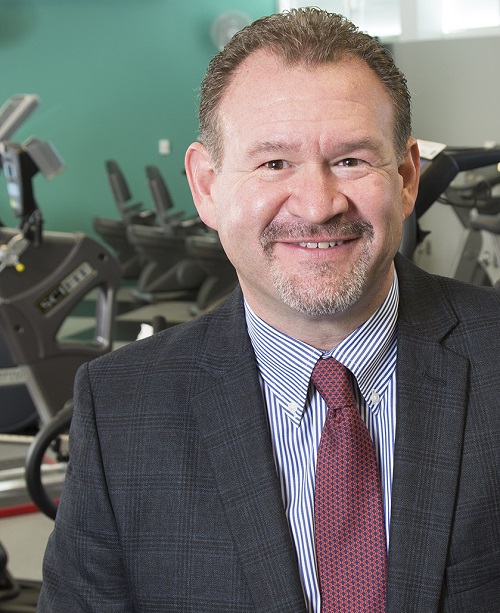 L. Casey Chosewood, MD, MPH, is Director of the Office for Total Worker Health at NIOSH, part of the CDC. In this role, he promotes the protection and improvement of the safety, health, and well-being of workers around the world through research, intervention development, and partnerships. From 2004 to 2009, he served as the Director of the CDC Office of Health and Safety, safeguarding the 15,000 members of the CDC workforce. His office led numerous CDC workforce protection programs, including all occupational health services, laboratory, environmental and biological safety programs, and workplace well-being and prevention initiatives. Prior, he served as the Medical Director of the CDC’s three occupational health clinics. L. Casey Chosewood, MD, MPH, is Director of the Office for Total Worker Health at NIOSH, part of the CDC. In this role, he promotes the protection and improvement of the safety, health, and well-being of workers around the world through research, intervention development, and partnerships. From 2004 to 2009, he served as the Director of the CDC Office of Health and Safety, safeguarding the 15,000 members of the CDC workforce. His office led numerous CDC workforce protection programs, including all occupational health services, laboratory, environmental and biological safety programs, and workplace well-being and prevention initiatives. Prior, he served as the Medical Director of the CDC’s three occupational health clinics.
Chosewood received his MD from the Medical College of Georgia and residency in Family Medicine at the University of Connecticut. He has been serving as Assistant Professor of Family and Community Medicine at Emory University School of Medicine since 1997. He received an MPH in Health Policy and Management from Emory University’s Rollins School of Public Health in May 2014. Before the CDC, Chosewood was Medical Director at the tech manufacturing company Lucent Technologies. |
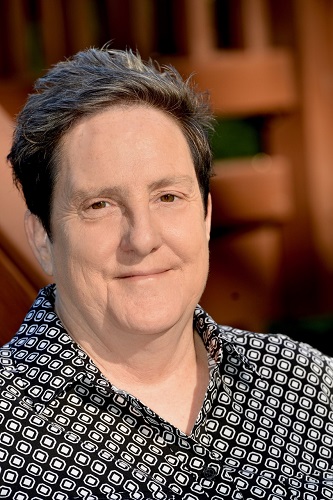 Paula Grubb, PhD, is a Research Psychologist at NIOSH in the Division of Science Integration. She has over 25 years of experience with occupational safety and health research, and her areas of expertise include job stress, psychosocial and work organization factors, workplace violence, bullying and harassment, discrimination, Total Worker Health, and intervention strategies for underserved populations and high-risk occupations. Paula Grubb, PhD, is a Research Psychologist at NIOSH in the Division of Science Integration. She has over 25 years of experience with occupational safety and health research, and her areas of expertise include job stress, psychosocial and work organization factors, workplace violence, bullying and harassment, discrimination, Total Worker Health, and intervention strategies for underserved populations and high-risk occupations. |
EHS On Tap is an EHS podcast by BLR’s EHS Daily Advisor. On each episode of EHS On Tap, our host will discuss emerging legal, regulatory, and policy issues with industry experts and the impacts to everyday safety and environmental professionals. EHS On Tap topics run the gamut of contemporary issues facing EHS managers and professionals today.
You can find and subscribe to our podcasts on Spotify, Amazon Music, Google Play, and iTunes, and also be sure to visit our SoundCloud page for a full listing of all of our episodes!


